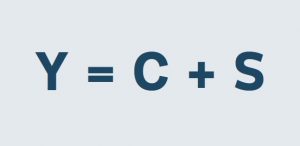
The effects of the lockdown are now being felt not only in personal day-to-day life, but also in the economic numbers. The forecasts for the gross domestic product (GDP) decline in 2020 vary between 5% and 50%, and the figure of 10 million short-time workers in April also speaks a clear language. I analyzed the impact of this development on expected credit losses in my last post. Reliable figures on the number and volume of these will probably be available at the end of June.
In this situation, the focus is also on how things will continue. Analogous to the wide range of the expected GDP decline, there are different approaches here, illustrated by the letters V, U or L.
A V-shaped development describes a scenario in which a sharp fall is followed by a comparably steep rise back to the old level after a short period of time. This is an optimistic scenario that almost everyone is hoping for, for understandable reasons.
The U scenario is less optimistic. After the descent, a valley bottom must first be passed through before there is another ascent. Because long this period is interpreted differently. The important thing is that an increase is expected again at the end. This is exactly where it differs from the L-scenario. Here, it is not assumed that the economy will return to its pre-crash level. In most cases, representatives of the L scenario call for fundamental changes (often of a political nature), without which recovery will not be possible. Below is some food for thought on your expectation formation about the most likely “letter”.
The goods market shock leads to a decline in income
In order to have an overview even in crisis mode, it is helpful to reduce things to radically simple model assumptions for the time being. The goods market shock leads to a decline in income. For households, there is a simple equation:

Y is income, C is consumption, and S is savings (consumption foregone).
If Y falls, either consumption or savings, or both, must fall. A sharp decline in income can also lead to negative savings in order to be able to realize a certain level of consumption. Negative savings can be represented by consumption foregone from previous periods, or consumption foregone in future periods, i.e. by debt. In addition to individual preferences, the price of foregone consumption plays a crucial role in household behavior.
At this point, it is also necessary to look again at my article on expected credit defaults. Household income restricts spending, and a decline can lead to a default on a loan or at least to a restructuring of the loan obligation if S=0 and DY >DC, i.e., consumption cannot be further restricted.
Restrained demand behavior
Two things play a key role in the analysis of demand behavior: the clearly empirically observable tendencies of households to steady consumption and the price expectations for the goods demanded. Consumption continuation is formed from income expectations. A drop in income and great uncertainty about when income will rise again lead to major adjustments in consumer behavior. Price expectations additionally have a reinforcing influence on demand behavior when prices are expected to fall, i.e. in a deflationary trend. This is especially true for high-value consumer goods. One can illustrate with a good like a car. If someone wants (not needs) to buy a car, he will bet on falling prices and wait with his purchase decision. Those who anticipate a significant drop in income will also react at this point in time with significantly restrained demand behavior.
Public or private demand stimulus?
Where will the demand impetus for a V or U come from? From a state demand, the recipe of Keynesianism often used in the past? Anyone who looks at the development of the tax and contribution ratio, the national debt and the state ratio in Germany over the last 30 years can form their own idea of what the preferred policy might be.
There is also a completely opposite approach: the state could increase household income by cutting taxes and thus stimulate demand. The revival in demand would then come from private demand. Depending on one’s political views, one or the other solution will be preferred. There will be agreement that the effectiveness of these measures will not be realized in the short term.
In another article, we will look at the issue of goods market shock from a business perspective.
Steffen Egly has been working in IT consulting for over 20 years, predominantly with a technical focus on insurance and banking topics. His fields of activity are insurance portfolio management, accounting, provisioning, loans and impairment.



0 Comments